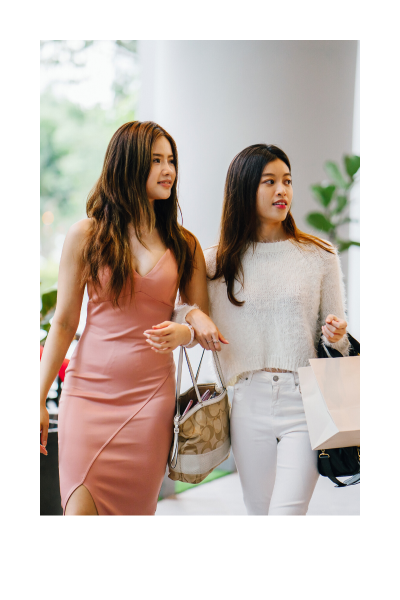
According to Wikipedia “Retail therapy is shopping with the primary purpose of improving the buyer’s mood or disposition. Often seen in people during periods of depression or stress, it is normally a short-lived habit. Items purchased during periods of retail therapy are sometimes referred to as “comfort buys” (compare comfort food). We often hear women say they just need a little “retail therapy” or “retail therapy” will solve that problem. We’ve heard “When the going gets tough, the tough go shopping.” It can be a real thing. There is some evidence that it does alter our mood. There are stories of people going into overwhelming debt but that is another blog.
What does Retail Therapy Mean to You
As a brick and mortar retailer, you can create a setting that provides retail therapy to your customers. This can be done in a number of ways and we are going to touch on some of them here.
First, look at what retail therapy does to help us feel better. For some it is a distraction from boredom or feeling unsatisfied with some part of our life. It might be that we are not feeling as secure in who we are- especially if we are comparing ourselves to someone else. It might be that we just need a brief escape from the stress of everyday life that will allow us to relax.
Making Retail Therapy Work for You
How can you create an atmosphere that invites your customer to feel like visiting your store is retail therapy? Here are a few ideas to get your creative juices flowing.
- Think of all five senses and how you can use them to engage with your customer.
- Smell- what do they smell when they first walk in your door? Can you create a smell that they associate with something or somewhere that is pleasant? Your store might be a store that carries products such as candles that does this for you. If not, there are fragrance systems that can be used to provide that effect. One caveat is to note that the scent should never be overpowering. Some people will be turned off with that and it will then work against you.
- Sight- When they walk in your door, what doe they see? Does it draw them into your store? Is it clutter of merchandise and obstacles creating more anxiety than relaxation? Visual merchandising that is effective is the kind that is subtle. Creating a “pathway” that draws them through your store will help them safely maneuver their way. It will also allow them to relax and escape into what they are seeing.
- Touch- Studies show that when people are touching a product, they are more likely to purchase it. This can be accomplished through displays, designed to get them to pick an item up and imagine it “being theirs.”This can also be done with bigger items, such as appliances. Opening doors of a refrigerator, stove or microwave; pulling out shelves or touching a control panel are ways you can get them involved with the product and it’s features that will appeal to their inner desires.
Displays need to be done with great forethought to avoid issues such as a mishmash of things that do not go together or piled with stuff that makes the customer afraid that everything will topple if they pick up an item. Even retail outlets such as thrift shops can benefit if they make it easy to find things, rather than digging through piles and racks of merchandise.
- Hearing- Have you ever walked into a store and it is stone cold silent? Do you feel like every step you take can be heard? Maybe you are with a friend and you are afraid to even speak because the salesperson is listening. There are a lot of studies that shows how music affects the buying decision and how long a person will stay in your store and how it will make them feel while they are there. Since we are talking about retail therapy here then it makes sense that this would play a big part in creating that experience for your customer. Studies show that the tempo, the genre and even the volume that you play your music is important. If you don’t have a central music system, make sure that wherever the music source is located that it doesn’t negatively affect a person who happens to be standing next to it.
One extra tip- if you are planning a special theme event, adapting your music to that theme can be an amazing touch that can bring it all together in creating a great experience for your customer.
- Taste- This might be a little more of a challenge if you do not sell food or beverage. If you do you just have to think about how effective it is for stores that provide samples to give people a chance to taste it before purchasing the product. If you are a gift shop you might have even a limited line of sauces or jams or flavored oils. Easy enough to offer samples of these products to engage with your customer. No food offering? You might have a product for sale, such as hostess gifts that you could add a food item to demonstrate how the item can be used to bring joy to them. If you are holding a themed in-store event you can offer a simple (or elaborate) food or beverage to tie in with the theme. At the very least, even a small bowl of mints at the cash register can leave a “sweet taste” in your customers mouth while you ring up their order.
Using All Five Senses for Success
As you can see, our five senses can be small and subtle gestures. With thought and planning, though, they can create that sense of relaxation and escape that provides the perfect retail therapy.

I appreciated it when you shared retail therapy can enable us to take a brief escape from the stress of everyday life that will allow us to relax. My wife just mentioned the other day that she is feeling stressed out from work that she needs to take a few days off to unwind. I will suggest to her going to a shopping mall where she can relax and enjoy herself.
I bet that will be a big help!